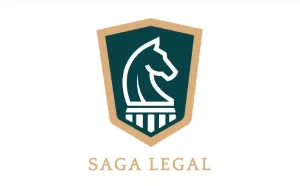- within Intellectual Property topic(s)
- in India
- with readers working within the Law Firm industries
- within Finance and Banking, Consumer Protection and Technology topic(s)
OVERVIEW
In today's tech-driven world, Artificial Intelligence (AI) is transforming the way businesses operate, innovate, and connect with consumers. With the emergence of AI, we also see new trends whereby people transform their photos to various animated styles. As AI-generated content becomes more common, it raises important questions about intellectual property (IP) rights. Who owns the work created by AI? Can these works be legally protected? How do we prevent AI from unintentionally copying existing work? These issues are at the heart of the ongoing discussion about AI and IP law.
Governments around the world are trying to strike a balance between encouraging AI-driven progress and ensuring fair IP protections. The lack of a global standard makes this even more challenging, as different countries take different approaches. For example, New Zealand has chosen a minimal-intervention, risk-based strategy, trusting that existing laws provide enough safeguards. Other nations, however, are considering broader legal updates to address AI's growing role in content creation and branding.
As AI continues to redefine creativity and production, it also challenges long-standing legal principles like originality. Copyright and trademark laws have traditionally set a low bar for originality, allowing a wide range of works to be protected. But with AI-generated content, a key question arises—should simply providing an instruction or prompt be enough to claim ownership?
This article explores the evolving relationship between AI and IP, the legal challenges it presents, and the possible solutions that businesses and policymakers must consider in an increasingly AI-driven world.
NAVIGATING THE COPYRIGHT LAW IN THE AGE OF AI
The Copyright Act, 1957 defines an "author" as the person who causes a work to be generated by a computer, excluding AI from claiming independent authorship. This means that the individual providing a prompt to AI may be considered the rightful author, while AI developers and the machine itself hold no legal claim. However, this interpretation raises concerns about co-authorship, especially considering AI's evolving role in content creation. Indian copyright law currently protects only computer-aided works, not computer-generated ones, making it unclear whether AI-assisted creations qualify for protection.
Another challenge is the requirement of originality under Section 131 of the Act. Indian courts follow the modicum of creativity standard, meaning a work must reflect human skill and judgment to qualify for copyright. AI, operating on algorithms and existing data, lacks human creativity, making it difficult to fit within traditional copyright principles. Additionally, AI's reliance on large datasets raises ethical concerns about copyright infringement, as AI-generated works may unknowingly incorporate protected material without seeking prior consent. The question of liability—whether it falls on the AI developer, the user, or the copyright owner—remains unresolved.
To address these issues, lawmakers could consider declaring AI-generated works ineligible for copyright protection or adapting global legal frameworks such as the EU's Text and Data Mining exceptions and the US fair use doctrine. Another approach could involve creating a sui generis system for AI-generated content, tailored to address its unique challenges. Technologies like digital watermarking or audio steganography could help track AI's use of copyrighted material. As AI's role in content creation grows, India may need specialized legislation, similar to the EU's proposed AI Act, to ensure copyright law evolves alongside technological advancements.
LEGAL COMPLICATIONS OF AI-GENERATED WORK AND TRADEMARKS
Trademarks protect the identity and reputation of businesses by preventing unauthorized use of names and logos. However, AI-generated content is challenging this protection, as AI systems, relying on publicly available data, can unintentionally create names or logos that closely resemble existing trademarks. This increases the risk of brand dilution and consumer confusion. The Trademarks Act, 1999, do not recognize AI as a legal entity, making it unclear who owns an AI-generated mark—the developer, the business using it, or the party commissioning the AI. Since AI-generated trademarks are derived from pre-existing data, their distinctiveness also comes into question, potentially making them ineligible for registration under Indian law.
Legal gaps in AI and trademark protection are evident in controversies like Disney vs. Microsoft, where AI-generated movie posters imitated Disney's trademarks, raising infringement concerns. While companies have responded by restricting AI access to certain brand names, users continue to bypass these limitations, exposing businesses to risks. To mitigate trademark conflicts, businesses using AI-generated marks must conduct thorough trademark searches before filing for registration. As AI continues to shape brand development, there is a pressing need for legal clarity on its role in trademark ownership and infringement.
PATENT ELIGIBILITY OF AI-RELATED INVENTIONS
AI innovations, like any technological advancement, require IP protection to ensure exclusivity, market advantage, and revenue generation. However, existing legal frameworks lack specific provisions for AI-driven inventions, raising key challenges in patentability and ownership. While AI-assisted and AI-generated inventions fall within the scope of patent law, determining the rightful inventor—whether the AI developer, user, or business—is still debated. Additionally, AI-generated works must meet statutory requirements such as subject matter eligibility and sufficient disclosure under the Indian Patents Act, 1970.
Patentability of AI innovations in India hinges on demonstrating a "technical effect" rather than mere computational advancements. Courts and patent offices worldwide, including in the EU and UK, have taken differing approaches. While the European Patent Office emphasizes a technical purpose for AI-related patents, the UK courts have recognized artificial neural networks as patentable. In India, AI inventions must navigate Section 3(k)2 of the Act, which excludes mathematical methods and computer programs from patent protection unless they provide a demonstrable technical contribution. As AI continues to evolve, Indian courts and patent offices must clarify their stance on AI-related patents to ensure balanced innovation protection.
WAY AHEAD
With the rapid advancement of technology in the field of AI, our dependency on technology has grown immensely from smaller needs such as buying groceries to bigger life decisions such as making and running businesses. As AI systems become increasingly capable of generating content—ranging from art and music to software code and written works—the traditional boundaries between human-created and machine-generated IP are becoming increasingly blurred.
Considering these emerging complexities, there is a need of a sui generis legal framework. Such a system distinct from existing IP laws could specifically address the unique issues posed by AI generated content for establishing clear criteria of authorship, ownership, and liability.
However, beyond enacting a sui generis statute there is also a pressing need to adopt a more flexible approach to examine the IP in the AI era. IP examiners, policymakers, and courts must be equipped to assess not only the technical and creative merit of AI-assisted works, but also the degree of human involvement and intention behind them. This broader perspective would help ensure that the legal system remains adaptive and equitable as we navigate the evolving intersection of human creativity and AI.
Footnotes
1. Section 13: Works in which copyright subsists-(1) Subject to the provisions of this section and the other provisions of this Act, copyright shall subsist throughout India in the following classes of works, that is to say- a. original, literary, dramatic, musical and artistic works, b. cinematograph films, and c. sound recordings. (2) Copyright shall not subsist in any work specified in sub section (1), other than a work to which the provisions of Section 40 or Section 41 apply, unless- (i.) in the case of published work, the work is first published in India, or where the work is first published outside India, the author is at the date of such publication, or in a case where the author was dead at that date, was at the time of his death, a citizen of India, (ii.) in the case of an unpublished work other than a work of architecture, the author is at the date of making of the work a citizen of India or domiciled in India, and (iii.) in the case of work of architecture, the work is located in India (3) Copyright shall not subsist- a. in any cinematograph film if a substantial part of the film is an infringement of the copyright in any other work, b. in any sound recording made in respect of a literary, dramatic or musical work, it in making the sound recording, copyright in such work has been infringed. (4) The copyright in a cinematograph film or a sound recording shall not affect the separate copyright in any work in respect of which a substantial part of which, the film, or as the case may be, the sound recording is made. (5) In the case of a work or architecture, copyright shall subsist only in the artistic character and design and shall not extend to processes or methods or construction.
2. Section 3(k): a mathematical or business method or a computer programme per se or algorithms;
The content of this article is intended to provide a general guide to the subject matter. Specialist advice should be sought about your specific circumstances.




